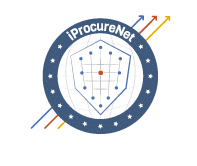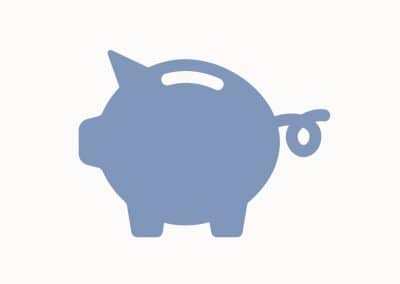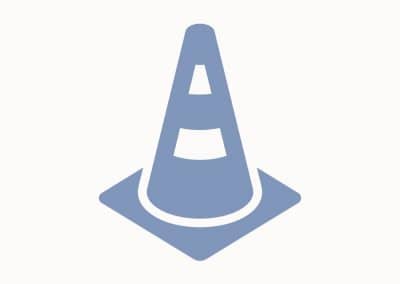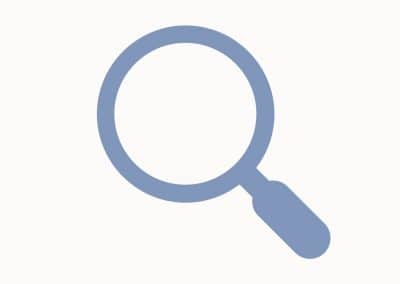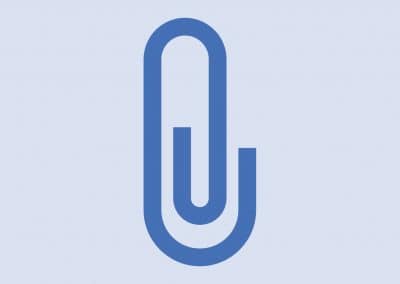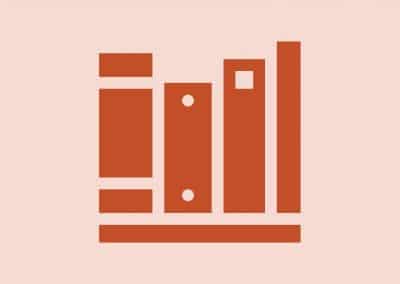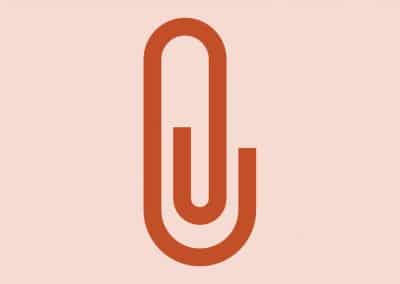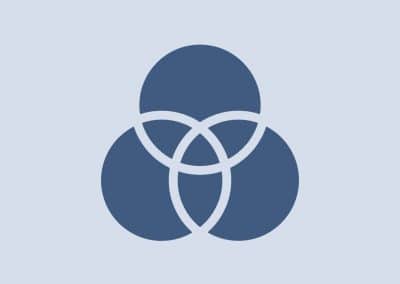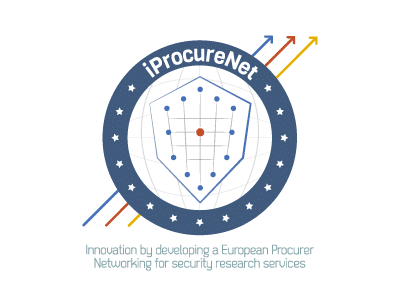Definition
- PCP is an approach to procuring R&D services other than those where the benefits accrue exclusively to the contracting authority for its use in the conduct of its own affairs, on condition that the service provided is wholly remunerated by the contracting authority and that does not constitute State aid, providing some rules are followed.
- The European Commission is supporting pre-commercial procurement to help public procurers and suppliers develop innovative solutions to societal challenges.
- PCP challenges industry from the demand side to develop innovative solutions for public sector needs and provides a first customer reference that enables companies to create competitive advantage on the market.
- PCP enables public procurers to compare alternative potential solution approaches and filter out the best possible solutions that the market can deliver to address the public need.
- Public procurers can drive innovation from the demand side by acting as technologically demanding customers that buy the development and testing of new solutions.
- This enables European public authorities to modernize public services faster and to create opportunities for companies in Europe to take international leadership in new markets.
- Creating a strong European market for innovative products and services is an important step towards creating growth and jobs in quickly evolving markets such as ICT
https://eur-lex.europa.eu/legal-content/EN/TXT/?uri=celex%3A52007DC0799
https://digital-strategy.ec.europa.eu/en/policies/pre-commercial-procurement
When to use it
When an unmet need requires innovation, as there is no available solution on or close to the market yet
Adequate process to procure R&D services, up to the prototyping stage
Procurer wants to induce step change in the market
Intellectual property rights management:
- CAs leave intellectual property ownership rights with the participating economic operators
- CAs keep license-free rights to use the research and development results and the right to require the economic operators to give licenses to third parties.
Key features
Multi phased procurement where the competition must be kept at the execution phase
May include the acquisition of the limited prototypes or test products developed
Cannot include the acquisition of larger volumes of resulting end-solutions on a commercial scale
It falls under an exemption of the Directives, but remains subject to:
- The EU Treaty principles
- The EU competition rules, including specific provisions to exclude State aid
- Any applicable national public procurement provisions that apply to PCP specifically
Does not constitute state aid as the R&D services are
- procured at a market price
- the selection procedures is open, transparent and non-discriminatory
- envisaged contractual conditions and terms, including with regard to IPR, are available in advance to all interested bidders
- The procurement doesn’t give a preferential treatment to any of the participants providers in the supply of commercial volumes of the final products to any CA
Encourage demand side to meet supply side
Is a multi-phased procurement and the competition remains during the execution stage
It is an important tool to stimulate innovation as it enables the public sector to steer the development of new solutions directly towards its needs. PCP is published openly using simple existing procedures: open, restricted or negotiated procedure with publication.
![]() European Commission – Framework for state aid for research and development and innovation
European Commission – Framework for state aid for research and development and innovation
Examples of PCP
- BROADGNSS
- Prevent PCP
In 2022, the JCBPP contract notices published in TED overwhelmingly concerned namely PCP with the CPV 73100000, i.e., research and experimental development services.
How does PCP works
- In PCP public procurers buy R&D from several competing suppliers in parallel to compare alternative solution approaches and identify the best value for money solutions that the market can deliver to address their needs.
- R&D is split into phases:
- solution design
- prototyping
- original development and validation/testing of a limited set of first products
- The number of competing R&D providers is reduced after each R&D phase.
- In PCP public procurers share the benefits and risks related to the IPRs resulting from the R&D with suppliers at market price. Suppliers retain IPR ownership rights, while procurers keep some usage and licensing rights.
- PCP can go up to the development and the purchase of a limited volume of first products or services developed in the PCP (‘limited’ because in a services contract like PCP the total value of supplies purchased needs to remain below 50% of the total PCP contract value). As R&D cannot include quantity production (large scale production to produce commercial volumes of end-products), PCP does not cover large scale commercialisation. The deployment of commercial volumes of end-products is the remit of PPI. PCP is thus complementary to Public Procurement of Innovative Solutions (PPI).
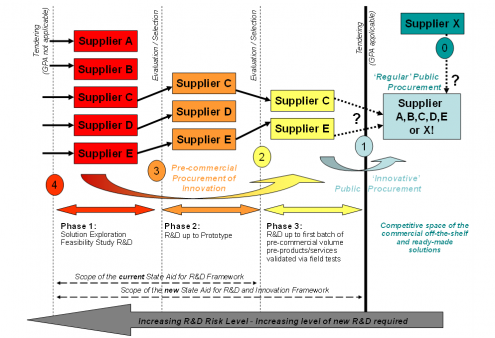
Phases of PCP
Major steps of PCP
- Step 1 – Preparation
- Needs identification
- Prior art analysis and IPR search
- Drafting the business case for the procurer to start an Innovation Procurement
- Open Market Consultation
- Step 2 – Drafting the documents
- The PCP Contract Notice
- The request for tenders
- The Framework Agreement
- Phase specific Contracts
- The PCP tender Form
- Step 3 – Conducting the PCP
- Publication of the Contract Notice
- Selecting R&D providers and awarding the framework agreement
- Phases of conducting a PCP:
- Phase 1: Solution Exploration: R&D providers start solution design and verify the feasibility of their solution approach. On completion, deliverables and a business/commercialisation plan are submitted. A performance assessment committee evaluates the results.
- Phase 2: Prototyping: R&D providers who successfully completed Phase 1 are invited to bid for Phase 2 contracts. The best scoring Phase 2 offers are awarded a contract. During this phase, the winning providers develop a prototype and test it in lab conditions. Deliverables and an updated business/commercialisation plan are submitted upon completion.
- Phase 3: Original development of a first limited set of products/services validated through field tests. Successful R&D providers from Phase 2 produce a limited set of products/services which are tested by the procurer in relevant environments/real-life operational conditions. On completion, deliverables and an updated business/commercialisation plan are submitted.
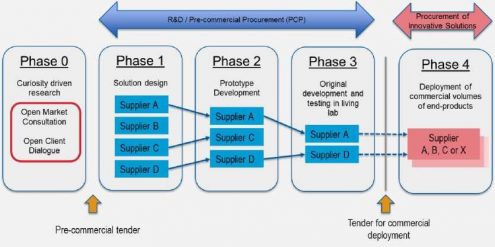
Different phases of Innovation procurement
After the PCP procedure, the public procurer may decide to start a Public Procurement of Innovative solutions (PPI) procedure to purchase a commercial solution for the same challenge that was addressed through the PCP. The PPI must be conducted in compliance with the applicable public procurement legal framework, to preserve international competition. There are several benefits for procurers and companies to use a separate PPI procurement after a PCP.
How to: Guide for JCBPP & IP
JCBPP and IP in the Security Sector
Joint Cross-Border Public Procurement (JCBPP)
Innovation Procurement (IP)
How to: Guide for JCBPP & IP
Ethics in procurement
